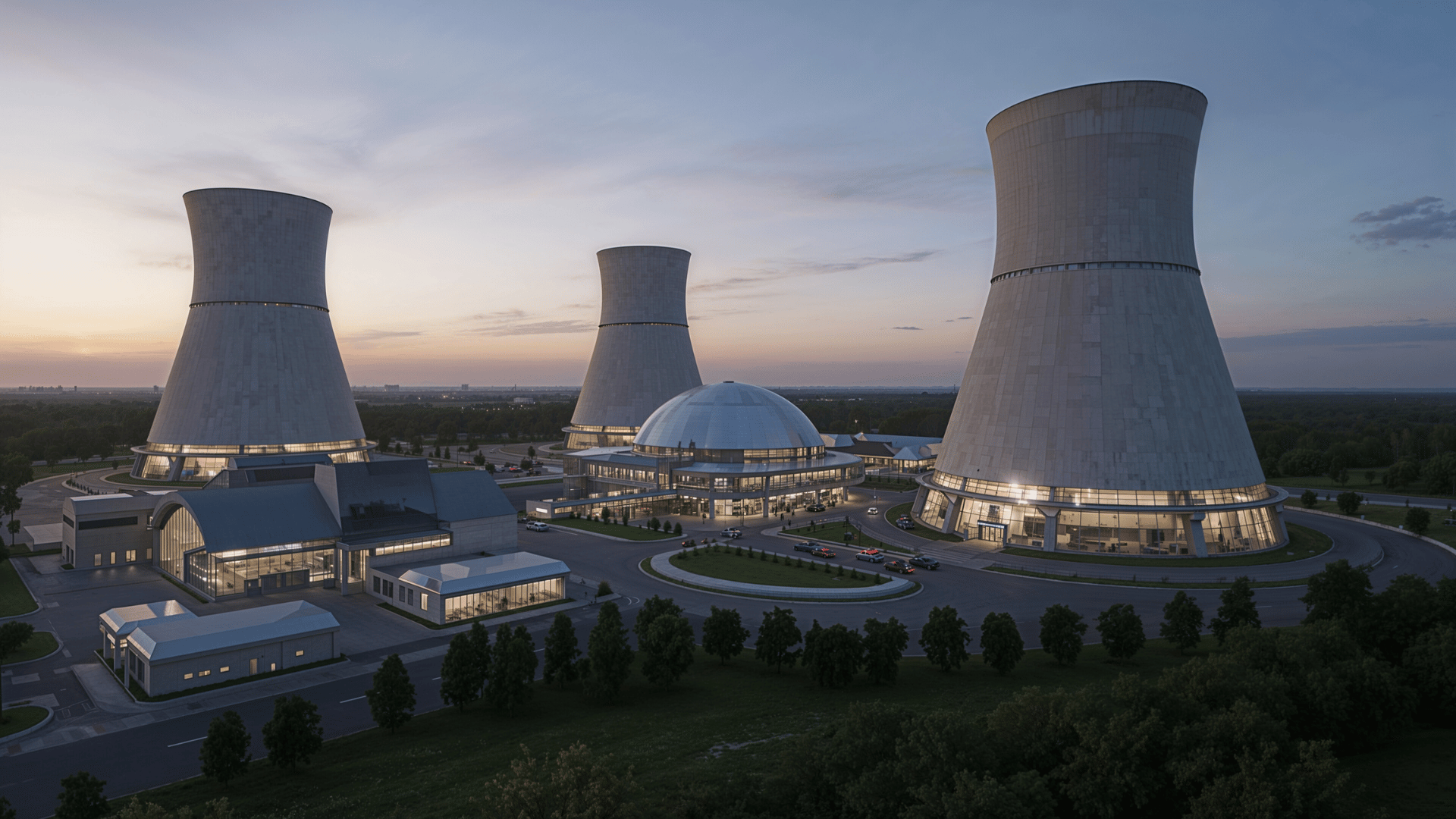

April 17, 2024
7
Min reading

This term, which may seem esoteric, is currently the subject of intense negotiations between Paris and Brussels. In fact, ARENH is a mechanism that is at the heart of the liberalization of the electricity sector.
It is a legal provision that obliges the historical supplier EDF for sale to its competitors (Engie, TotalEnergies, ENI...) nuclear energy at the fixed price of €42/MWh.
In order to better understand the origin and role of ARENH, two fundamental aspects of the French electrical landscape must be mentioned:

Source: RTE
Indeed, it is for these two reasons that ARENH (Regulated Access to Historic Nuclear Energy) is a mechanism that is at the heart of recent negotiations.
Since 1999, the European Union has been determined to create competition on electricity market in France.
Public authorities must therefore adapt the regulations that accompany these economic transformations.
Beyond simply putting regulated tariffs into competition, the public will is to make them gradually disappear. Today, they only concern sites with a power of less than 36 kVA.
Second, as we said in the introduction, electricity production in France is mostly nuclear. The position that EDF occupied at the beginning of the 21st century was extremely dominant in the sector. EDF's almost monopoly situation makes it difficult for new entrants to enter this market.
We will thus see how the public authorities reacted and implemented the ARENH mechanism.
First of all, we must go back to the events of the years 2000-2010.
At the beginning, major electricity consumers had the choice of staying at regulated sales rates (Green Tariff) or subscribing to a market offer. It is a purely financial choice, so manufacturers will in part make the choice of competition. This is due to the fact that the prices in the wholesale markets were much lower than the regulated ones.
Competing electricity suppliers are therefore gaining market shares. Admittedly, these remain modest, but the market is gradually liberalizing.
This system worked until the year 2004. The rise in the prices of raw materials (gas and coal) then causes an increase in electricity prices. Regulated electricity sales rates (TRVE) then become more attractive than competing offers.
Industrial consumers appeal to the authorities in order to be able to return to regulated tariffs. In 2006, the latter obtained the vote of TarTam from the Senate (Transitional Regulated Market Adjustment Tariff).
This rate allows customers to supply themselves with electrical energy at a price slightly above the Green Rate, but much cheaper than market offers. However, European authorities consider that this tariff represents a brake on the opening of competition. In 2010, France, under the impetus of Brussels, made the choice to comply with European law.
The NOME law was promulgated on December 7, 2010. The Fillon government is based on the work of the Champsaur Commission to implement this new law. The Champsaur report highlighted EDF's monopoly position. Indeed, the latter has “amortized” nuclear power plants, financed by all French taxpayers.
This nuclear “rent” must be shared with new entrants in this sector. To make the market fairer and thus promote competition, ARENH is set up.
EDF's competitors can buy from it Nuclear electricity at a price of €42/MWh. It is therefore a right, the ARENH law. Every alternative supplier can claim it. The total volume sold by EDF cannot exceed 100 TWh.
This is why ARENH is a mechanism that is at the heart of the liberalization of the sector.
Thus, as we have just explained, EDF sells a quarter of its production at a price of €42/MWh. Alternative suppliers must sign a framework agreement with EDF. The Energy Regulatory Commission (CRE) frame these procedures.
Competing suppliers go to ARENH counter, which takes place every year in november (there is a box office in July, but it is still very small). They then file their ARENH applications for year N+1. Suppliers determine this amount based on the consumption forecasts of their customers during off-peak hours in low periods (summer).
The volume of ARENH is highly dependent on prices on the wholesale market. If these are above €42/MWh, then it is likely to see alternative suppliers flocking to the counter. This explains the strong variations in ARENH requested volume from one year to the next.
Prices on the wholesale market were well below €42/MWh for products Baseload in 2016, which explains the absence of demand at the counter.
ARENH offers are therefore advantageous for customers if: Market prices at the moment are greater than €42/MWh.
As we said, the limit of ARENH volumes sold by EDF cannot exceed 100 TWh. What happens if demand reaches 147 TWh as in 2020? Well, the volume allocated to each supplier will be reduced proportionally.
It is very likely that the final price paid by the customer is more important than the price originally announced. In fact, you buy ARENH when the market prices are above €42/MWh. If the amount of ARENH allocated at the beginning is revised downwards at the end of the year, this automatically causes an increase in bills.
Overall, this mechanism has the merit of having established a form of equity in this sector. Unfortunately, as we have seen, it also has areas for improvement.
For more information, go to this article: ARENH: What is clipping?
As mentioned in the introduction, the future of this mechanism is currently being played out in Brussels. ARENH is a mechanism that is at the heart of the reorganization of the EDF group: The “Hercules” project. The exercise is delicate, because it is necessary to succeed in reconciling objectives that are sometimes quite remote: to reduce EDF's debt while guaranteeing a concurrency more important.
In particular, this bill was included in the agenda of the Council of Ministers on 19 May, but should probably be postponed.
The price of ARENH is the essential element of the mechanism.
EDF management is campaigning for an increase in the price to more than €50/MWh. However, a redesign of the mechanism should take place if rumours surrounding the negotiations are to be believed. In fact, the preferred option would be to guarantee a price of €49/MWh for all the electricity produced by EDF and sold on the markets.
In this way, if the market prices are less than €49, the State undertakes to reimburse him for the difference. Otherwise, if EDF resells its MWh for more than €49, EDF undertakes to pay the difference into a “gap” account managed by the State. This compromise would make it possible to pay a “fair” price for nuclear power, while allowing EDF to finance its subsidiaries.
This mechanism will undoubtedly change significantly in the coming weeks.
Do not hesitate to sign up for our SirEnergies newsletter, to know the rest of the ARENH soap opera.
If you believe EUROPE'ENERGY, there would be a significant risk of seeing the ARENH system disappear for customers who do not benefit from regulated rates. This would exclude all sites with more than 36 kVA of power. This would be the result of negotiations between Brussels and Paris in order to agree on the sharing of the nuclear rent.

In this guide, we invite you to dive into the world of ARENH to understand its challenges and its concrete implications for you.
Take the first step towards controlling your energy budget now!

.png)

The €/MWh is a price unit used in wholesale markets, while kWh is the unit visible on your bills.
.png)

Some businesses may obtain a partial or total exemption from the TICFE or the TICGN, depending on their activity and energy intensity. The support of an expert makes it possible to identify the eligibility criteria and to put together the file.
.png)

These are signals sent by RTE during periods of tension on the electrical network. The Sirenergies tool informs you in real time to anticipate your uses.
.png)

The industry is concerned by TICFE, TICGN and other contributions that may represent an important part of invoices. Sirenergies identifies cases of exemption and accompanies the procedures to benefit from them.
.png)

One invoice consists of several elements: consumption, supplier share, taxes and contributions. The analysis of each line makes it possible to identify possible errors and to check the consistency with the signed contract.
.png)

Tertiary companies are concerned by taxes such as TICFE or TICGN. Sirenergies checks the accuracy of invoices, identifies possible exemptions, and helps correct errors to sustainably reduce costs.
.png)

Farms are subject to taxes such as TICFE or TICGN. Sirenergies verifies their application, identifies cases of exemption and accompanies the procedures to reduce the tax burden.
.png)

Exceeding capacity leads to financial penalties and can impact the size of the contract. Adjust the correctly subscribed power makes it possible to avoid these additional costs.

